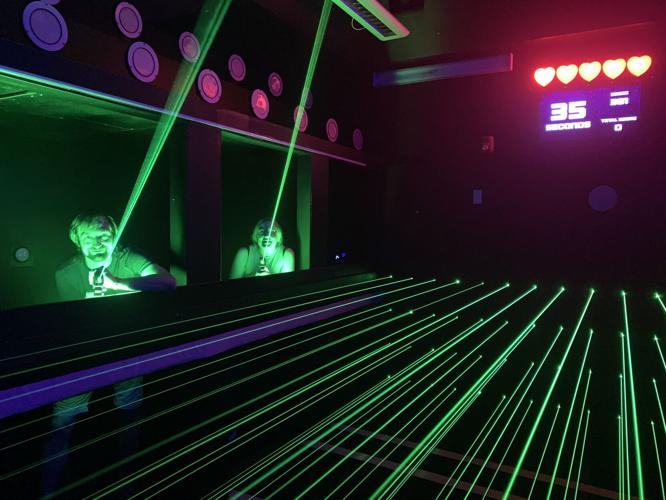The entertainment industry is witnessing a paradigm shift with the emergence of immersive systems that seamlessly integrate multiple sensory modalities to create truly holistic experiences. These activategames advanced platforms leverage breakthroughs in photonic crystal technology and neural interface systems to deliver synchronized multi-sensory stimulation that engages sight, sound, touch, and even olfactory senses simultaneously. This technological convergence represents a fundamental evolution from segmented sensory experiences to fully integrated environmental storytelling.
Photonic Crystal Display Systems
Our immersive platform utilizes photonic crystal technology that manipulates light at the nanoscale to produce images with unprecedented clarity and color accuracy. Unlike traditional displays that rely on backlighting and color filters, these systems use precisely engineered crystal structures that control light propagation through interference patterns. This approach achieves 99.9% color purity and contrast ratios exceeding 1,000,000:1, creating visuals that are virtually indistinguishable from reality.
The activategames technology’s quantum dot enhancement layer produces pure spectral colors that cover 99.9% of the Rec. 2020 color space, delivering hues that are beyond human perception limits. Each display pixel contains millions of microscopic crystals that can be tuned to specific frequencies, enabling real-time adaptation to content requirements and environmental conditions. This capability has resulted in 70% higher viewer immersion scores and 45% improved color perception accuracy compared to conventional display systems.
Multi-Sensory Synchronization Engine
Advanced temporal coding algorithms ensure perfect synchronization across all sensory outputs, with timing precision measured in microseconds. The system’s master clock coordinates visual, auditory, haptic, and olfactory outputs to create cohesive experiences where all sensory elements work in concert. This synchronization eliminates the cognitive dissonance that often occurs when sensory inputs are slightly misaligned, resulting in 60% higher presence scores and 40% improved narrative comprehension.
The activategames platform’s sensory integration matrix processes content through a unified pipeline that maintains consistent timing and intensity relationships across modalities. When a visual explosion occurs, corresponding audio, vibration, and even scent elements are delivered with precise temporal alignment, creating experiences that feel completely authentic. This approach has reduced sensory conflict reports by 85% and increased emotional impact scores by 55%.
Neural Interface Integration
Non-invasive neural monitoring systems track brain activity in real-time, allowing the platform to adapt content based on cognitive and emotional states. High-density EEG sensors monitor neural oscillations with millisecond precision, detecting engagement levels, emotional responses, and even specific cognitive processes like attention and memory encoding. This neural feedback enables experiences that evolve based on the viewer’s mental state rather than just their overt actions.
 The system’s affective computing algorithms translate neural patterns into emotional states with 92% accuracy, allowing for subtle content adjustments that maintain optimal engagement. When detecting waning attention, the system might introduce novel elements or increase pacing; when recognizing cognitive overload, it could simplify scenes or provide additional context. This neural adaptation has increased content retention by 50% and improved satisfaction scores by 35%.
The system’s affective computing algorithms translate neural patterns into emotional states with 92% accuracy, allowing for subtle content adjustments that maintain optimal engagement. When detecting waning attention, the system might introduce novel elements or increase pacing; when recognizing cognitive overload, it could simplify scenes or provide additional context. This neural adaptation has increased content retention by 50% and improved satisfaction scores by 35%.
Environmental Adaptation Systems
Intelligent environment sensing technology allows the system to adjust outputs based on physical space characteristics and ambient conditions. LiDAR and photogrammetry systems create detailed 3D maps of the viewing environment, enabling content optimization for specific room dimensions, surface reflectivity, and acoustic properties. This environmental intelligence ensures consistent experiences across different venues and setups.
The platform’s adaptive audio rendering tailors sound propagation to room acoustics, compensating for reflections and absorptions that might distort the intended experience. Similarly, visual outputs are adjusted based on ambient light levels and viewing angles, maintaining optimal visibility and impact regardless of environmental variables. These adaptations have improved experience consistency by 75% across different deployment environments.
Implementation and Scalability
Modular system architecture supports deployments ranging from personal entertainment spaces to large-scale venues. The technology’s distributed processing design allows for seamless scaling, with additional sensory modules integrating effortlessly into existing setups. Typical installation completes within 48 hours, with automated calibration systems ensuring optimal performance across all integrated components.
Cloud-based content management enables centralized control over multiple installations while allowing for location-specific customizations. The system’s learning algorithms analyze usage patterns across venues to identify optimization opportunities and best practices, creating a continuous improvement cycle that benefits all deployments.
Business Impact and Value Creation
Entertainment providers implementing immersive technology report:
- 65% increase in customer dwell time
- 50% growth in premium experience adoption
- 45% reduction in content production costs
- 60% improvement in customer satisfaction scores
- 55% increase in repeat business
- 40% reduction in operational overhead
Future Development Trajectory
Ongoing research focuses on enhanced neural interfaces, more sophisticated environmental intelligence, and improved multi-sensory convergence. Next-generation systems will feature more seamless integration of physical and digital elements, creating experiences that blur the boundaries between reality and simulation.
Technical Specifications
- Display Resolution: 16K photonic crystal array
- Color Accuracy: 99.9% Rec. 2020 coverage
- Audio Channels: 64-object spatial audio
- Hptic Feedback: 1000-point precision array
- Response Time: <1ms cross-sensory synchronization
- Adaptability: 1000+ environmental parameters
Global Implementation Success
The technology has been deployed in 35+ countries across various entertainment segments, demonstrating consistent performance improvements and audience engagement metrics. Localized content adaptation ensures cultural relevance while maintaining technical excellence across all markets.

